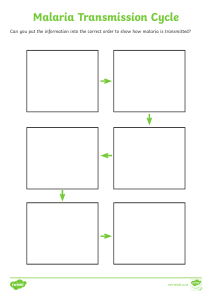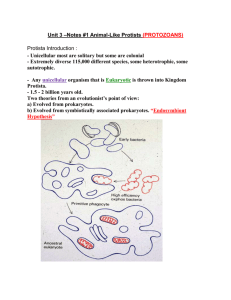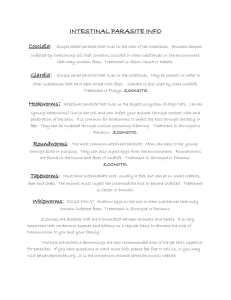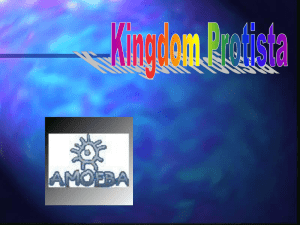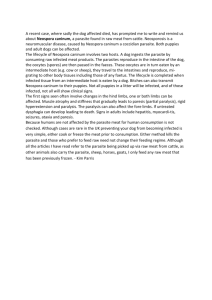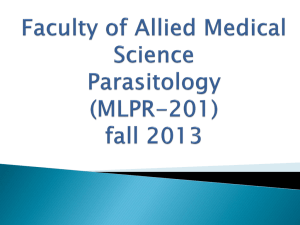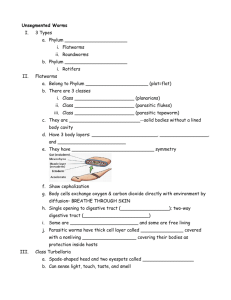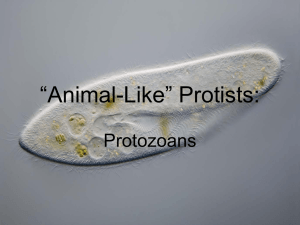harmful protists - Horace Mann Webmail
advertisement
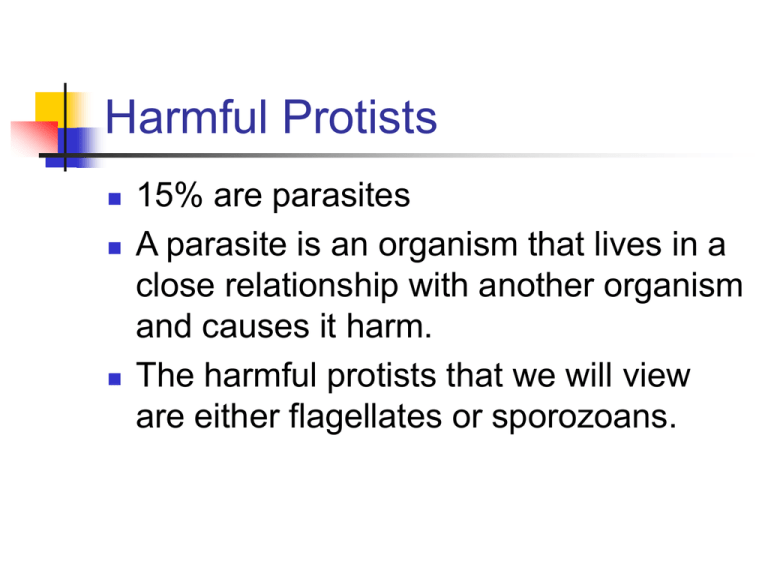
Harmful Protists 15% are parasites A parasite is an organism that lives in a close relationship with another organism and causes it harm. The harmful protists that we will view are either flagellates or sporozoans. Plasmodium Phylum: Sporozoan Causes malaria 300-500 million cases worldwide yearly more than 1 million deaths yearly Mosquitos pick up the parasite from the blood of their victims They then pass the parasite to their next victim when they suck that victims blood. plasmodium Red blood cell Malarial parasites are visible within the red blood cells. They are stained a dark bluish color. Life cycle Female anopheles mosquito bites infected person Plasmodium reproduces in mosquito for a week Mosquito bites another person, carrying spores in its saliva to deposit into blood of person The parasite travels to liver, multiplies, and then destroys red blood cells Person has fever, chills, nausea, aches Treatment Quinine and other medicines are used No vaccine is known Anti-malarial drugs before you travel to risky places. They disrupt the parasite while it is in the liver. Trypanosome Phylum: Flagellates Causes African sleeping sickness Red blood cell trypanosome Life cycle Tsetse fly bites an infected person and ingests trypanosome Trypanosome reproduces in fly, passes into blood of next person who is bitten. Causes lesions, swollen lymph nodes, infected spleen. Meningitis, encephalitis, weight loss and coma (sleeping sickness) Almost always fatal without treatment Person given blood serum intravenously No vaccine Giardia Phylum: Flagellate Causes giardiasis or hiker’s disease flagellum giardia Life cycle enters body when person drinks feces contaminated food or water multiplies in colon causes diarrhea, weight loss and cramps Cryptosporidium Phylum: Sporozoan Cause cryptosporidiosis Found throughout the world including USA Life cycle Lives in intestine of infected humans or animals Found in soil, food or water that has been contaminated with feces Symptoms include diarrhea, stomach cramps and slight fever which last for two weeks. In the background are the finger-like projections of the intestine. The spore Is seen breaking open to release “newlyhatched” cryptosporidia. Cryptosporidium are hard to kill; they are chlorine resistant, can live for days in swimming pools No treatment is known Prevent by practicing good hygiene and avoiding contaminated water. Toxoplasmosis Phylum: Sporozoan Carried by cats, can also be found in raw meat Life cycle Cats infected by eating rats or mice Excreted in feces Human eat sporozoan, perhaps after not washing hands after handling kitty litter Fever, liver and spleen enlarged toxoplama Can infect unborn child, causes Retardation Motor problems Damage to brain Progressive blindness Also very dangerous to individuals with AIDS Other harmful protists Entamoeba - causes amebic dysentery which can destroy intestines Leishmania - causes tropical disease that can harm spleen, liver, intestines Trichomonas - causes sexually transmitted disease. It resides in urethra of male and can be transmitted to female during intercourse. It causes pain, painful urination and vaginal discharge Pneumocystisis carinii causes a lifethreatening pneumonia (PCP) for people with AIDS
